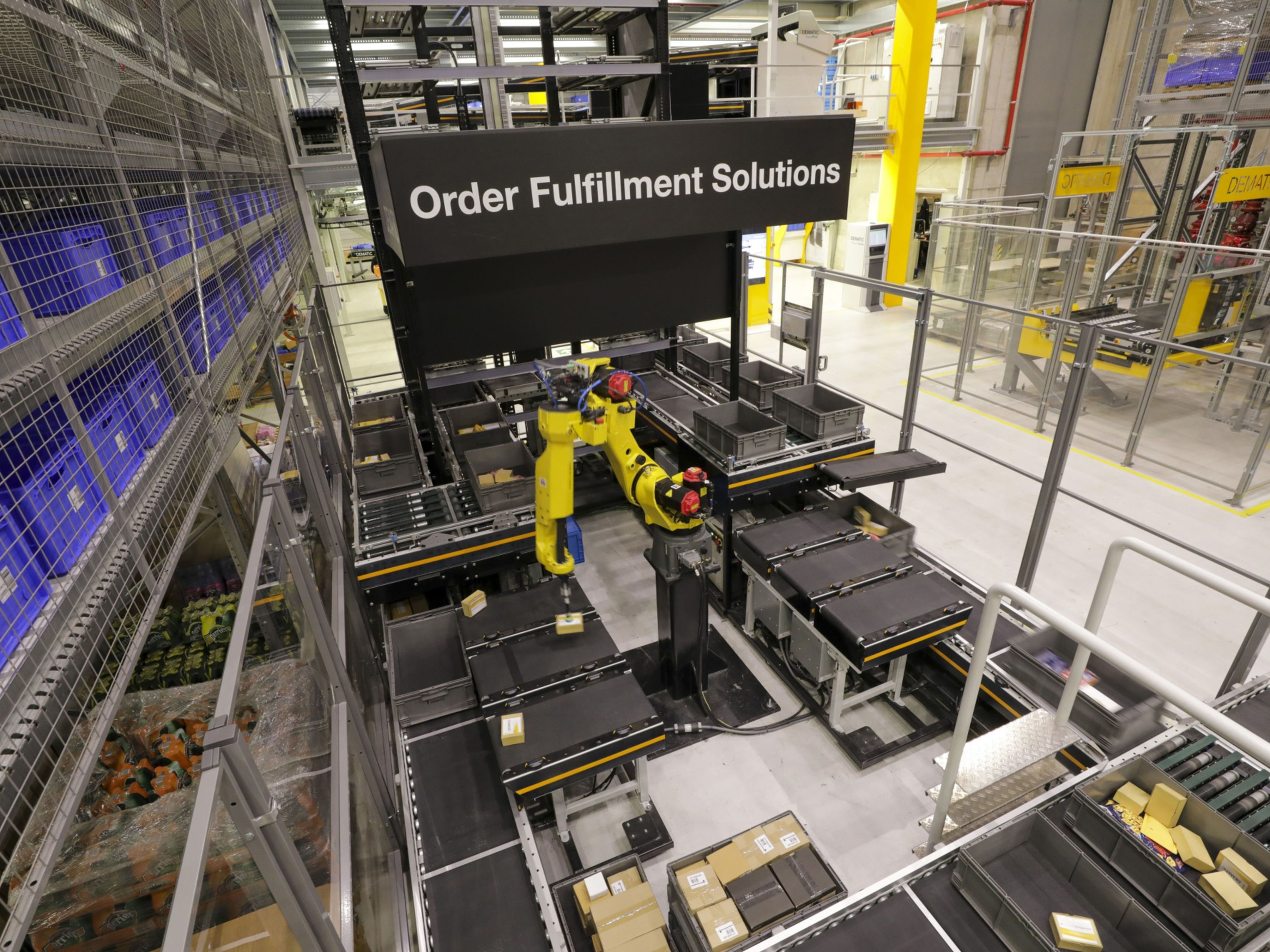
Home » How the Pandemic Is Paving the Way for Robots in Retail Fulfillment
EDITOR'S Q&A
How the Pandemic Is Paving the Way for Robots in Retail Fulfillment

September 8, 2020
Automation was proceeding at a rapid pace in many factories and warehouses before the coronavirus pandemic hit. Now, however, concerns over worker health, the need for social distancing, and the relentless push for cost-cutting are accelerating the progress of robots for order fulfillment. In this conversation with SupplyChainBrain Editor-in-Chief Bob Bowman, Randy Mercer, Vice President of Global Product Management with 1WorldSync, sketches the present and future of supply-chain automation, as retailers hasten to keep up with the growth of e-commerce sales.
SCB: Is the coronavirus pandemic accelerating the use of automation in manufacturing and the supply chain?
Mercer: I would say unequivocally yes — it’s very much expanding it.
SCB: In what way?
Mercer: One of the biggest things we're seeing within our customer base is a focus on efficiency. It’s about doing things faster, cheaper and more accurately, and people are turning to automation to do that.
SCB: What kind of automation are we seeing on the factory floor?
Mercer: One of the types is how folks are identifying products at the packaging level. How do I understand a product in all of its different packaging configurations, at different points throughout the supply chain? Historically, there was less of a focus on making sure there was specific identification on all packaging. We're seeing more of a renewed focus on that from the manufacturer's perspective. So when somebody orders 10 cases of something, they can be sure to get 10 cases out the door very quickly, instead of having to deal with confusion — was it really cases, or did they mean pallets or consumer units? For a manufacturer, it's about responding to orders much more accurately and much more quickly.
SCB: Is it the same product information that was being used in a more analog, human-driven environment, or does automation allow for a deeper dive into additional types of data?
Mercer: I think it does. You start requiring content with greater detail about products. Look at the emergence of frictionless shopping — I can walk into the store, pick up something and walk out with it. Scanners and cameras are identifying what I have in my hand. You need bulletproof, high-res images of that item from every single angle, so that you can train your systems to understand what it is. Then you couple those images with fact-based data. All of that means you need content that historically was nice to have to sell product online, but now it's imperative to have in order to support things like frictionless shopping.
SCB: What about the warehouse? What kind of automation is emerging there as a result of the pandemic?
Mercer: Again, it goes back to the theme of efficiency and reacting really quickly. There’s always been a focus on being able to slot products efficiently in a warehouse, in the interest of making employees’ jobs easier and faster. I take something off a truck, I know right where to go with it and which rack to put it in. In order to do that and plan into your WMS [warehouse management system], you need very accurate information about the size of cases and pallets. Then you combine that with an automated picking system, such as a robotic forklift. If the picker gets to a certain slot in a rack and the wrong thing is there, you have an enormous problem. So there’s an intense focus on the accuracy of how we're slotting things in warehouses, to support automation going forward.
SCB: What other types of robots are we seeing in factories and warehouses that are emerging now to a greater degree?
Mercer: Robotic forklifts have been around for a while. You're seeing micro-sized versions of that, that can pick smaller things that you don't need a forklift to get. There are automated sorting systems, similar to what the frictionless shopping mechanisms are using. They’re identifying products based on what they look like, in addition to scanning barcodes. A lot of this is to support direct-to-home shipping. You’ll continue to see that get stronger.
SCB: Have supply-chain environments figured out how machines and people can work together, or is there still something to be settled in that area?
Mercer: To say that it's completely worked out is probably a little optimistic at this point. A lot of organizations are transitioning to automation for what they used to do with humans. They’ll go from people to robots in terms of doing the basic work, but then they’ll shift some of that manpower to making sure they’ve got the data accurate and complete.
SCB: Nevertheless, I would think the net result would be fewer human jobs in such environments.
Mercer: You're definitely right. There will be a shift of some of that manpower. Is it going to be the same resources? No. You'll see a reduction of the people who used to do the picking and assembling of orders, and maybe an increase in those are focused on the data aspect of it to drive the automation.
SCB: Can automation play a role in the redesign of warehouses and factories to ensure the safety of the humans who remain in those facilities in a time of a pandemic — taking into account, for example, the need for social distancing?
Mercer: Absolutely. Warehouses are being redesigned for full automation of placement and storage. Honeycomb systems like those of Ocado are being designed to be humanless. You're taking folks out of harm's way relative to forklifts coming around a corner and colliding with somebody.
SCB: Do you think that all this automation was in the cards even before the pandemic, and would have happened without it?
Mercer: I think so. Organizations were already trending toward automation. The replacement of humans with technology was going to happen — the pandemic just made it happen at express speed.
SCB: How is this all going to look in years to come? Are there any developments in automation that might surprise us?
Mercer: The futurist’s view today probably doesn't look much different than it would have six or nine months ago. You'll continue to see more fully automated warehouses. Brick-and-mortar retail will change a lot. Stores are already using a portion of their space as micro-fulfillment centers. That's how a lot of those physical locations are going to end up — there won’t be consumers going in and out of them anymore, except to pick up orders. It’s just going to happen much more quickly than it would have otherwise.
RELATED CONTENT
RELATED VIDEOS
KEYWORDS Data Management (Big Data/IOT/Blockchain) E-Commerce/Omnichannel HR & Labor Management order fulfillment Retail robotics Warehouse Management Systems
Related Directories
Subscribe to our Daily Newsletter!
Timely, incisive articles delivered directly to your inbox.
Popular Stories

2024 Supply Chain Management Resource Guide: There's Only One Way Off a Burning Platform
VIEW THE LATEST ISSUECase Studies
-
Recycled Tagging Fasteners: Small Changes Make a Big Impact
-

Enhancing High-Value Electronics Shipment Security with Tive's Real-Time Tracking
-

Moving Robots Site-to-Site
-
JLL Finds Perfect Warehouse Location, Leading to $15M Grant for Startup
-
Robots Speed Fulfillment to Help Apparel Company Scale for Growth



